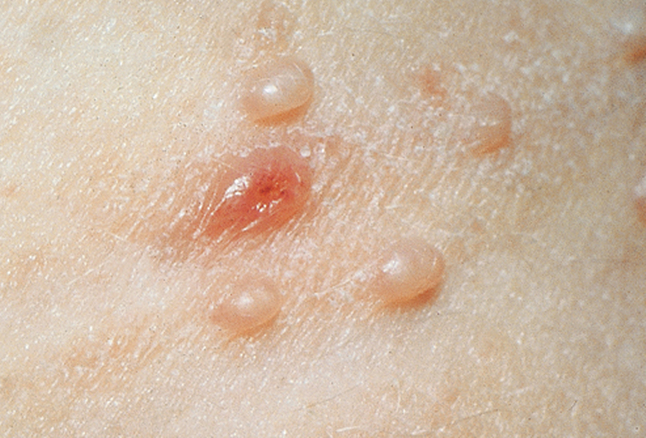Molluscum Contagiosum Causes, Symptoms, Diagnosis and Treatment

What is Molluscum Contagiosum?
Molluscum Contagiosum is a skin infection caused by a virus, which is called the Molluscum contagiosum virus, produces benign raised lesions, or bumps, on the upper layers of your skin. Mollusca may occur anywhere on the body including the face, neck, arms, legs, abdomen, and genital area, alone or in groups. The lesions are rarely found on the palms of the hands or the soles of the feet and usually white, pink, or flesh-colored with a dimple or pit in the center. They often have a pearly appearance. They’re usually smooth and firm. They may become itchy, sore, red and swollen.
Causes of Molluscum Contagiosum
The virus that causes molluscum contagiosum spreads easily through:
- Close direct contact – such as touching the skin of an infected person
- Contact with contaminated objects, such as toys, towels and faucet handles
- Sexual contact with an affected partner
- Scratching or rubbing the bumps spreads the virus to nearby skin.
Symptoms of Molluscum Contagiosum
Symptoms of Molluscum Contagiosum include bumps on the skin that:
- Are raised, round and flesh colored
- Are small typically under about 1/4 inch (smaller than 6 millimeters) in diameter
- Characteristically have a small indentation (umbilication) or dot at the top near the center
- Can become red and inflamed
- May be itchy
- Can be easily removed by scratching or rubbing, which can spread the virus to adjacent skin
- Usually appear on the face, neck, armpits, arms and tops of the hands in children
- May be seen on the genitals, lower abdomen and inner upper thighs in adults if the infection was sexually transmitted
Diagnosis of Molluscum Contagiosum
- A distinct appearance
- A skin scraping
- Biopsy
It’s usually unnecessary to treat molluscum contagiosum, but skin lesions should be examined which lasts longer than few days. A confirmed diagnosis of molluscum contagiosum will rule out other causes for the lesions, such as skin cancer, chickenpox, or warts.
Treatment of Molluscum Contagiosum
It is usually best not to treat, particularly in children because:
- The mollusca will usually go away without treatment within 12-18 months. Having the rash does not limit your activities such as going to school, sports, swimming, etc.
- Many of the treatments can be painful (such as liquid nitrogen).
- Some treatments have a risk of burning the surrounding skin.
- All treatments have a small risk of scarring the skin. Scarring rarely occurs if the mollusca are left to go away on their own.
Treatment options if needed
- Liquid nitrogen (cryotherapy).
- Creams and lotions:
- Benzoyl peroxide.
- Hydrogen peroxide.
- Potassium hydroxide.
- Iodine preparations.
- Imiquimod cream
- Pulsed dye laser therapy.
Related Articles:
Candidiasis Causes, Symptoms, Diagnosis and Treatment
Jacquest Erythema Causes, Symptoms, Diagnosis and Treatment
Herpes Zoster Causes, Symptoms, Diagnosis and Treatment
Yaws Causes, Symptoms, Diagnosis and Treatment
Seborrheic Dermatitis Causes, Symptoms, Diagnosis and Treatment
Monkey Pox Causes, Symptoms, Diagnosis and Treatment
Myiasis Causes, Symptoms, Diagnosis and Treatment
Osteomyelitis Causes, Symptoms, Diagnosis and Treatment
Radiation Sickness Causes, Symptoms, Diagnosis and Treatment
Typhus Causes, Symptoms, Diagnosis and Treatment
By : Natural Health News




